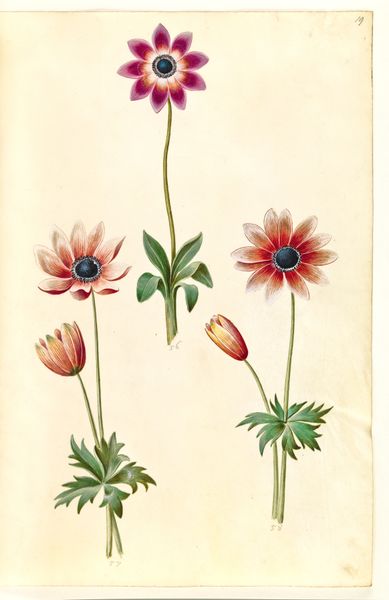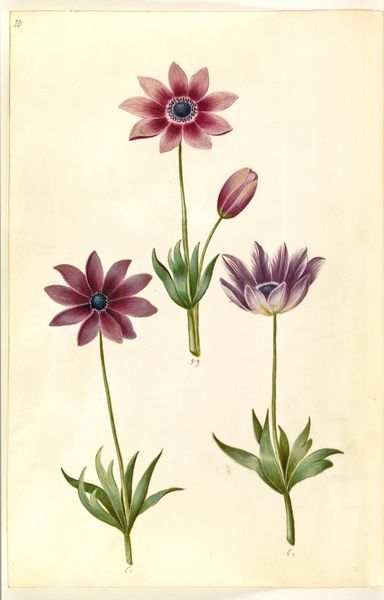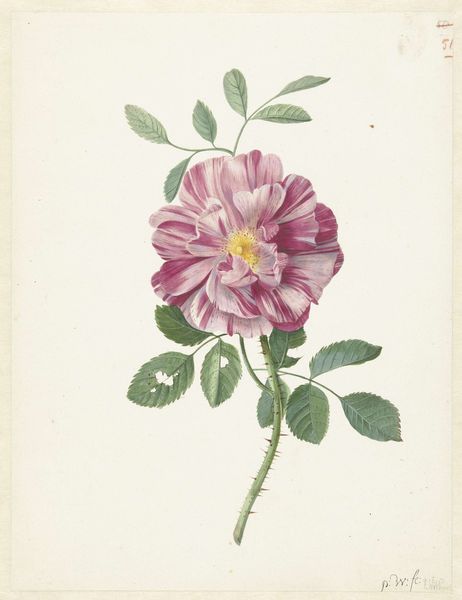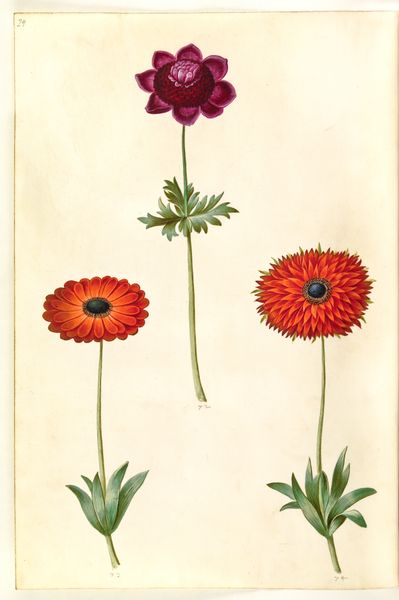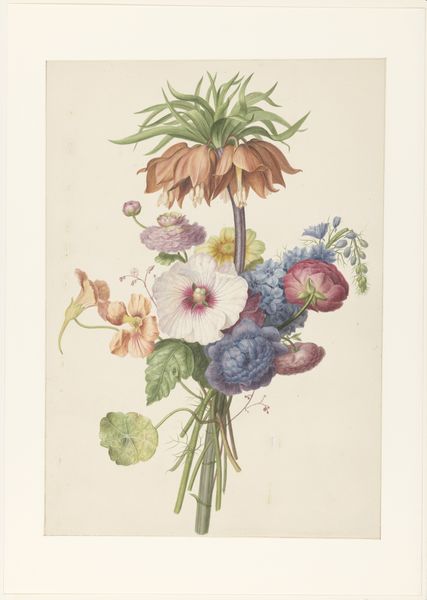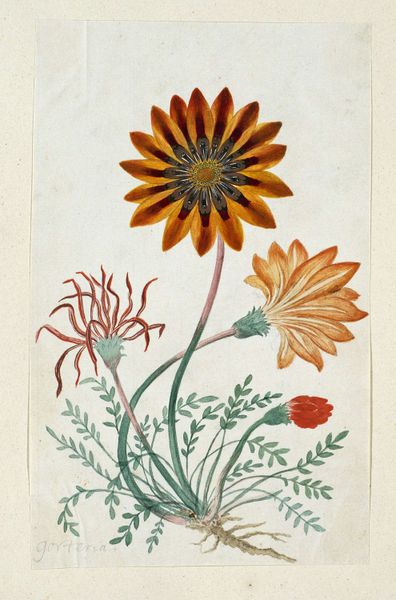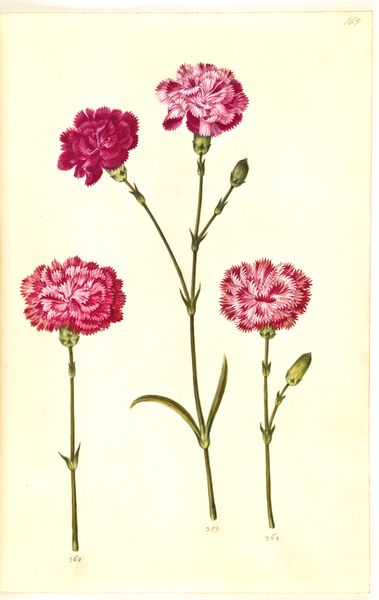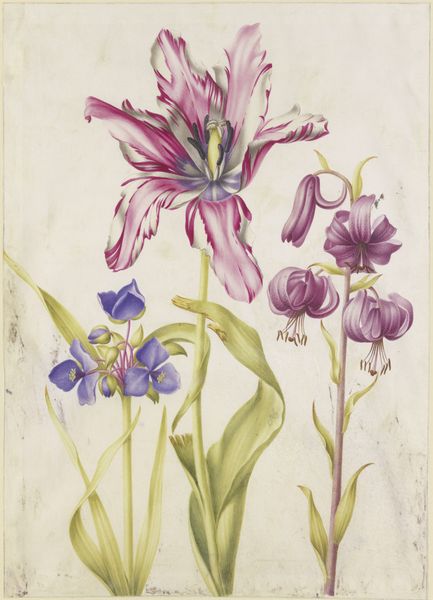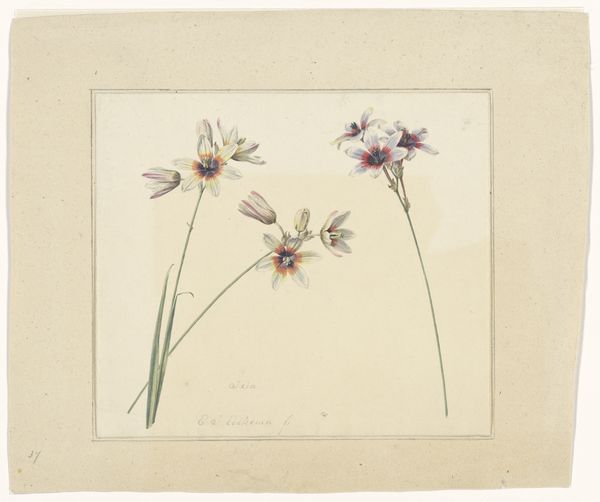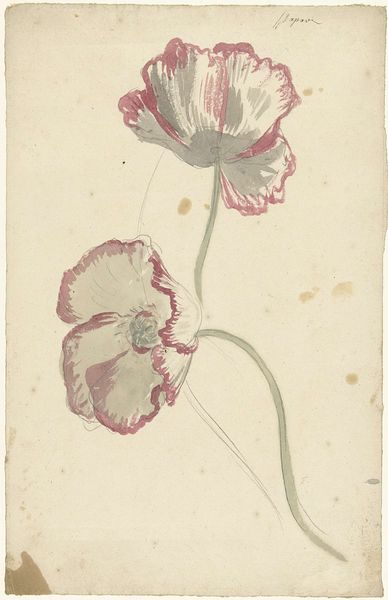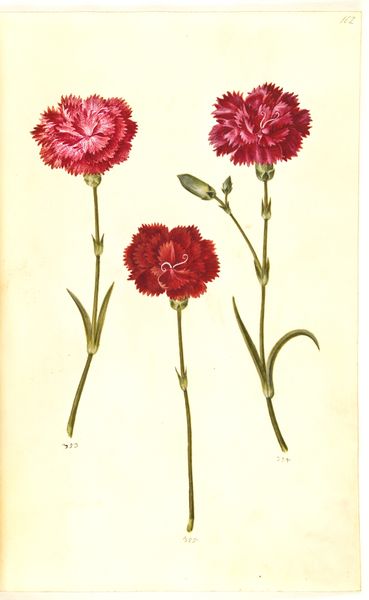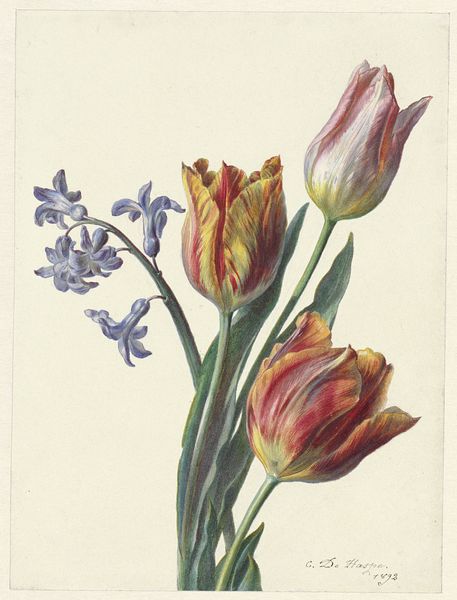
drawing, watercolor
#
drawing
#
watercolor
#
watercolour illustration
#
academic-art
#
botanical art
#
realism
Dimensions: height 240 mm, width 198 mm
Copyright: Rijks Museum: Open Domain
Curator: Willem Hekking's watercolor drawing, "Dahlias," possibly from the late 18th or 19th century. It strikes me as beautifully rendered, yet quite simple in its arrangement. What do you see in this piece? Editor: Well, initially, I appreciate the detail in the rendering of the petals. Given your focus on materiality, I wonder about the artist's choice of watercolor for this botanical study? Was it simply the most accessible medium? Curator: Accessibility is key, absolutely! Watercolor was easily portable, inexpensive, and suited to rapid field studies. This suggests not just artistic intention, but also economic factors that governed the production and consumption of art during this period. Think of it – a quick, relatively inexpensive method of capturing botanical specimens, perhaps for later use in larger, more elaborate works, or even for scientific illustration. Editor: So, it’s tied to both artistic practice *and* broader scientific and economic contexts. I hadn’t thought of it that way. Do the colors play a role? Curator: Definitely! The pigment sources become very interesting then: Where did Hekking get these colors? Were they locally sourced, or imported, revealing global trade networks impacting even seemingly simple botanical illustrations? Furthermore, how would the specific qualities of those pigments affect the permanence and appearance of the artwork over time? What labor went into extracting and processing them? Editor: It's amazing how deeply the choice of materials is connected to wider social and economic factors. It makes you see the art-making in an entirely different light. Curator: Precisely. By considering the material conditions of artistic production, we gain a more comprehensive understanding of the artwork’s cultural significance. I might almost consider how the "preciousness" we ascribe to fine art shifts when we understand the process behind it in ways usually reserved for craft! Editor: I'll never look at watercolors the same way again. It opens up so many new ways of interpreting art.
Comments
No comments
Be the first to comment and join the conversation on the ultimate creative platform.
